Though many people don't know it, a few years ago, Honda was not the greatest truth-teller in the car industry. The problem, you see, was that the popular automaker, for one reason or another, couldn't get its reporting done on time.
Honda Had Reporting Issue
Not only could Honda not get its auto safety reports done on time, a lot of the time, but the automaker also couldn't get them done at all. It was so bad that the National Highway Traffic Safety Administration (NHTSA) launched a probe into the issue of safety reporting and ended up fining Honda a bundle.
That was in 2015. One guesses that Honda saw the error of its ways because the carmaker hasn't been on the NHTSA radar for some time. And, when it has had to do something like its auto safety reporting – an annual requirement of any carmaker that has any safety issues – today, it just is doing it.
It's not to say there haven't been some issues in which Honda has been involved because there have. Perhaps the biggest issue in which Honda has been the Takata Safety Recall.
It is with little doubt the most significant safety recall in the auto industry's history. Granted, Honda was just one of 20 carmakers swept up in the exploding front airbag housing recall, but it also had a bunch to lose from this scandal. The automaker was dependent on Takata for its airbags and components, and it owned a piece of the airbag manufacturer (a standard business practice in Japan).
Honda cut ties with the airbag manufacturer as the safety recall issue deepened. Because of their relationship -- Takata's position as Honda's key supplier -- the automaker was involved early in the Takata recall.
Takata Recall Memory Refresher
To refresh your memory about the recall, airbag housings manufactured in Takata's Mexican factory blew up on deployment, killing and wounding front seat drivers and passengers. Due to poorly sealed units that allowed moisture seep onto the housing. There was also a dirt pollution problem with the housings as well. The poorly sealed, dirty units allowed the propellant – ammonium nitrate – to destabilize over time.
As ammonium nitrate becomes more moisture-laden, it weakens and becomes more unstable. When needed in a deployment, the unstable propellant becomes more powerful, often causing the airbag housing to burst apart, sending shrapnel scything throughout the front of a vehicle. The bursting airbag housings have killed more than 23 operators in the U.S. The bursting front airbag housings have killed many outside the U.S., with more than 280 operators and passengers seriously injured. Ford has also been impacted, as Takata airbags were used in 2000-2010 Rangers (and Mazda B2000-3000s).
Now, Honda has another major recall on its hands. This week, the automaker recalled 1.7 million Honda Accords and CR-Vs after NHTSA received reports from 278 consumers of automatic braking problems.
Specifically, federal regulators are probing 2018-2019 Honda Accord sedans and 2017-2019 Honda CR-V crossovers. The consumer complaints allege that the automatic braking systems (AEB) activated the brakes unexpectedly while the vehicles were moving. Most new cars have new vehicles have AEB which work and have saved lives.
According to Consumer Reports, as cited on Yahoo, NHTSA sees potential links to six crashes that ended up with some injuries.
Honda To Cooperate With Probe
Through an email from its spokesperson Chris Martin, Honda said it will "cooperate with the NHTSA through the investigation process, and we will continue our own internal review of the available information."
Honda isn't the only automaker under investigation for this issue, and Nissan has been under investigation for similar issues. Mazda also reportedly initiated a recall three years ago for a similar problem. Tesla, two weeks ago, was forced to recall Model 3 and Y vehicles for "phantom braking," where the brakes suddenly activate under AutoPilot control.
As was explained on Yahoo, there are several things NHTSA can do. If an automaker issues a recall, the ball is in the automaker's court to remedy and then report to the agency.
In a defect investigation, the safety agency "obtains information from the automaker, which also can present its own arguments related to the potential defect. NHTSA says that most defect investigations are closed within 12 months, either because the manufacturer decides to conduct a recall or because NHTSA decides to conduct a recall or because NHTSA decides that there is no safety-related defect. Sometimes they take longer, including then the defect investigation requires further analysis. The investigation into unintended braking in Nissan vehicles, for example, has been open since 2019.
"A recall happens when either an automaker or NHTSA discovers a safety defect that must be corrected or finds that a vehicle does not meet federal safety standards. These defects often come to light after consumer complaints. Learn how to report a safety complaint to NHTSA. According to NHTSA, most recalls are initiated by automakers without any involvement from the agency."
AEB Systems Usually A Win-Win
AEB systems detect vehicles or obstacles and are supposed to slow vehicles to lessen the potential of severe crashes. AEB has saved lives and reduced crash severity. Most new cars have this technology, says CR.
It's great that vehicles have this capability – and here's the but – but the safety agency has received complaints about the Accord and CR-V, which indicate that the braking activations happen randomly "and without warning." Indeed, sometimes it involves significant speed changes when nothing is on the road. When this occurs, the vehicle is in danger of a rear-end crash.
Photo: Honda
Marc Stern has been an automotive writer since 1971 when an otherwise normal news editor said, "You're our new car editor," and dumped about 27 pounds of auto stuff on my desk. I was in heaven as I have been a gearhead from my early days. As a teen, I spent the usual number of misspent hours hanging out at gas stations Shell and Texaco (a big thing in my youth) and working on cars. From there on, it was a straight line to my first column for the paper, "You Auto Know," an enterprise that I handled faithfully for 32 years. Not many people know that I also handled computer documentation for a good part of my living while writing YAN. My best writing, though, was always in cars. My work has appeared in Popular Mechanics, Mechanix Illustrated, AutoWeek, SuperStock, Trailer Life, Old Cars Weekly, Special Interest Autos, etc. You can follow me on: Twitter or Facebook.


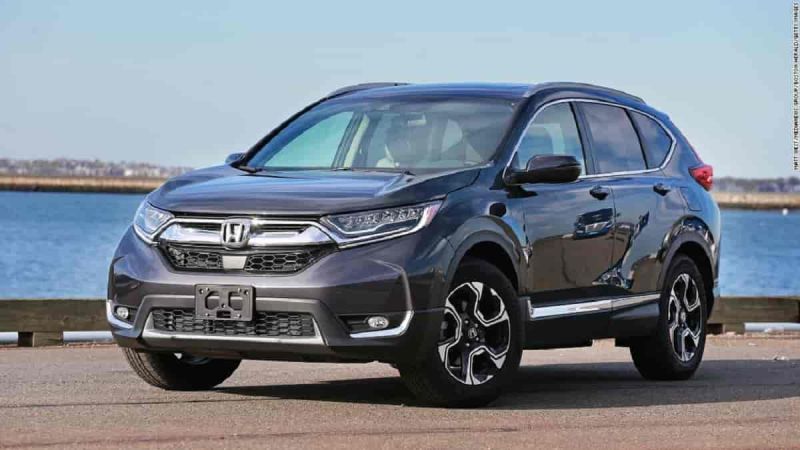




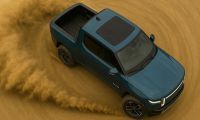
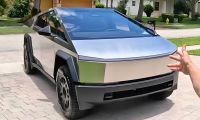
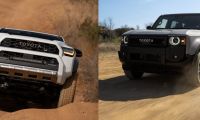

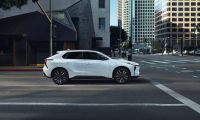
Comments
I've been saying this about
Permalink
I've been saying this about my 2019 CRV since the day I bought it. I took it into the dealer to be looked at multiple times. They could find nothing wrong but they eventually changed the angle of the front camera. My car still will break by itself. There is an inherent problem with these cars.
2018 Honda CRV here. Nice to
Permalink
In reply to I've been saying this about by Gail Dwyer (not verified)
2018 Honda CRV here. Nice to know others are having this problem. I never took to dealer because I knew it would result in no fix and would be waste of time. It has done to me at least twice. First time, with no car in front of me, decided to lock it brakes up when I came up to railroad tracks. Car behind me almost rear ended me. Second time was on the highway, which was double scary.
If you're aware of these
Permalink
In reply to 2018 Honda CRV here. Nice to by David Bassham (not verified)
If you're aware of these issues with your vehicle and continue to drive it, you're choosing to put other people's lives at risk. Thus you can be held accountable for your choice.
My 2017 C-rv has done this
Permalink
In reply to I've been saying this about by Gail Dwyer (not verified)
My 2017 C-rv has done this several times. Happened just yesterday on the hwy. It has mainly occurred when applying “normal” pressure to brake pedal
We have a 2018 Honda
Permalink
We have a 2018 Honda Ridgeline. Since day 1 we have had problems with the automatic brake kind got coming on and it jerks the steering wheel when it happens. There isn’t anyone near us when it happens. Our local dealer just ignores us when we tell him about it. It scares us when it happens.
Yes my 2018 ridgeline does
Permalink
In reply to We have a 2018 Honda by Barbara Hensle (not verified)
Yes my 2018 ridgeline does the same especially if a vehicle turns in front of me and is not even close to me the light comes on and starts applying brakes
I hate when people turn in
Permalink
I hate when people turn in front of me or someone squeezes in front when I’m using my adaptive cruise. The car freaks out and then of course my wife freaks out on me as if it’s my fault somehow. Otherwise I love my Hondas technology.
We had this EXACT problem
Permalink
We had this EXACT problem with our 2019 Passport in which the auto braking ( collision avoidance ) system activated several times without cause. One on occasion, the vehicle applied the brakes suddenly on a straight road with no obstructions and nearly caused us to get rear ended. I took it to Hinda and they said the system was calibrated properly and functioning normally. We continued to have issues with it until we traded it in. The system is dangerous and poorly engineered.
I have had the exact same
Permalink
In reply to We had this EXACT problem by Steve Molnar (not verified)
I have had the exact same situation happened to me with the auto braking system on my 2021 Honda HRV. My brakes slam up on me and my daughter thinks it's me doing it on the highway and gets angry and I'm not doing it it's the car.
I have had the exact same
Permalink
In reply to We had this EXACT problem by Steve Molnar (not verified)
I have had the exact same situation happened to me with the auto braking system on my 2021 Honda HRV. My brakes slam up on me and my daughter thinks it's me doing it on the highway and gets angry and I'm not doing it it's the car.
My 2017 Crv will set the
Permalink
My 2017 Crv will set the braking system off when going under a highway direction sign or when nothing is around. Took to dealership said they had a computer upgrade that would work. The fix I believe was to change my settings which didn't work. I looked to see if what setting they use and all options were turned off. How can you tell if they put it on a computer and upgraded? Especially when it continues to happen.
Bring back the Hond Fit with
Permalink
Bring back the Hond Fit with manual transmission
, car has all what's needed to be a all around car. Little maintenance, great fuel economy, great cabin room, great visibility, rides great in snow for a front wheel drive car, and great value for the money.
I had a 2021 Honda Civic.
Permalink
I had a 2021 Honda Civic. Twice it autobraked on me with NO vehicles in front of me. It almost caused a rear end collision. The guy behind me yelled at me and gave me the finger, because he thought I was an idiot driver. It is stupid the autobraking cannot be permanently disabled. On top of that, I had the battery replaced 3 times in 1 year. When I leave town for a week, I come back to a dead battery. I traded the Honda in for another car. It was an unreliable and dangerous piece of expensive junk. I will never buy another Honda again.